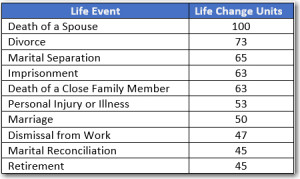One of my college roommates, a super sweet, laid back southerner from Tennessee, was the queen of superstition. Laura knew them all. And she believed them all. Don’t step on cracks on the sidewalk. Only pick up a penny if it’s heads up. Don’t walk under a ladder. Carry a rabbit’s foot. Don’t let a black cat cross your path. Don’t break a mirror. Knock on wood. Don’t open an umbrella while indoors. Cross your fingers. Laura wasn’t anxious about any of them; they were just a part of her life, like putting one foot in front of the other. Some of the superstitions I had heard of, others I hadn’t. One of the latter was saying, “Rabbit Rabbit” as your first words on the first day of the month to bring you good luck.
I don’t believe in superstitions, luck, fate, or signs. I often want to, but I can’t. I believe in coincidences and controlling what you can with decisions and actions. Perhaps it stems from good things happening in my life because of things I do, and not having much luck in things that are random. Take the lottery. I never win. Last Christmas, I was shocked to scratch a $4 winner on a ticket from a Yankee Swap. I gave it to my husband to cash in. The lottery gods wouldn’t touch me twice. Unfortunately, he went with his brother, who is convinced he has the MA Lottery figured out. My husband came home and instead of my $4, he gave me two hand-picked tickets guaranteed by my brother-in-law. I scratched them, then threw the losers in the trash. Goodbye $4 windfall.
But despite not believing in dumb luck, I think of Laura every single month when my husband and I say, “Rabbit Rabbit”. We’re not sure if it’s the first thing said after midnight or when you wake up. So sometimes we say it at both times. And when we don’t say it, our hearts sink a little, dreading the bad luck we might have. Why do we do this? My husband doesn’t believe in superstitions either, although I bought him Patriots socks for a Christmas sock party and he announced mid-season this year that they were his lucky socks. He said the Patriots always won when he wore them.
“Really? Do you think Brady would’ve been off his game had you worn your gray Smartwool socks?”
Yet, I say “Rabbit Rabbit” each month, even leaving my husband a Post-It Note on the bathroom mirror when I go to bed so he remembers when he wakes up.
One of the reasons research has found as to why people believe in superstitions is stress. Stress comes from a fear of not knowing or the inability to control. Believing in the power of non-related items (a four-leaf clover) or actions (a bat flying into your house) helps shift responsibility from something that you don’t think you can take credit for or for which you cannot be blamed. No wonder Laura was laid back.
Another cause is that humans are wired to reason, so when things aren’t logical, we don’t know how to connect the dots. Believing in an outside force removes the pressure to mentally resolve.
So is believing in superstitions bad? Not if they are harmless. In fact, they can be fun. Just give yourself the chance to make good things happen at work and home by making smart decisions, and accept that some things are just happenstance.
Epilogue
On Monday, February 5th, 2018, I told my husband I threw out his Patriots socks.
“What? Why? What happened? Did they have a hole?”
“They’re broken,” I answered.






